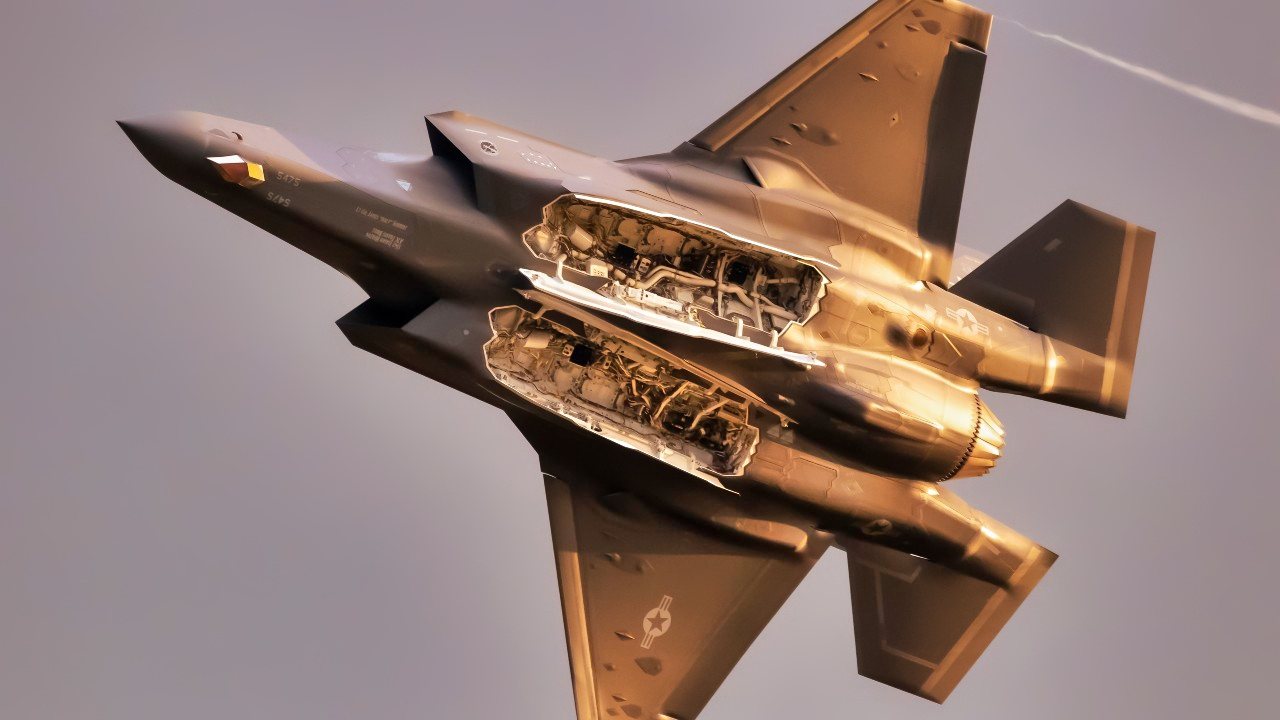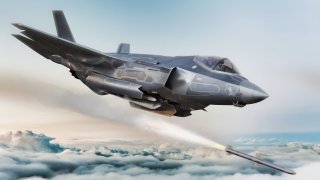MAKO: The Hypersonic Missile Built for U.S. Military F-35 Fighters
Lockheed Martin's recent unveiling of the Mako missile at the Sea Air Space 2024 event represents a significant advancement in air-launched hypersonic weapon systems.
According to Loy, the weapon has already been physically fit tested on the F-35, and digitally tested aboard the F-22, F-16, F-15, F/A-18, and a Navy P-8 Poseidon to boot. In fact, the missile can be affixed to any aircraft with “30-inch lugs” on its weapons ejector rack – a fairly ubiquitous size across American aircraft, found among BRU-32, BRU-46/A, and BRU-47A carriage and release systems. Loy specifically cited the BRU-32, commonly found on U.S. Navy F/A-18 Super Hornets, as an example.
According to Lockheed Martin statements, Mako started development seven years ago, placing the program onset in 2017. This coincides with the earliest known discussions about the Air Force’s intent to field the Stand-In Attack Weapon, but predates what we generally consider to be the onset of the modern “hypersonic arms race,” which began with a speech delivered by Russian President Vladimir Putin on March 1, 2018.
Hypersonic, as an adjective, may refer to anything traveling faster than Mach 5, but hypersonic as a weapons classification has much more rigorous requirements. All ballistic missiles, from Germany’s V-2 Rocket in World War II to Russia’s Kinzhal air-launched ballistic missile, achieve hypersonic speeds by flying along a fairly predictable arcing ballistic flight path. Modern hypersonic weapons, on the other hand, achieve similarly stunning speeds, but retain the ability to maneuver at those high speeds to a much larger degree than is possible with ballistic warheads. It’s this combination of speed and maneuverability that makes these weapons so difficult to intercept – not their speed alone.

In fact, in many instances, a ballistic missile will reach its target faster than a modern hypersonic missile will – as long as the ballistic missile isn’t intercepted along its way.
Mako’s ability to fly at hypersonic speeds while maneuvering makes this weapon unique compared to existing hypersonic weapons, which are generally categorized into one of two groups: Hypersonic Glide Vehicles and Hypersonic Cruise Missiles. Hypersonic Glide Vehicles (HGVs) can be seen as an extension of ballistic missile technology, though they seperate from their boosters at a lower altitude, before gliding toward their targets unpowered, but maneuver using control surfaces, chemical thrusters, or a combination of the two.
Hypersonic cruise missiles are powered by exotic air-breathing jet engines like ramjets or scramjets, and fly along more horizontal flight paths using lift – like an aircraft – to fly and maneuver. Mako does not appear to be either, achieving hypersonic speeds through sheer brute force, and likely maneuvering via tail-mounted control surfaces, or potentially due to some degree of thrust vectoring in the rocket nozzle.
But while that does set the Mako missile apart from existing hypersonics, what could make this weapon truly dangerous is its potential launch platform. A hypersonic missile already represents a massive challenge to intercept, but one that can be launched by stealth fighters operating practically anywhere takes an already extreme undertaking and could potentially render it all but impossible.
WHAT ARE THE IMPLICATIONS OF THE MAKO MISSILE IF IT ENTERS SERVICE?
Hypersonic speeds are generally considered to start at around Mach 5, which (depending on altitude) is right around 3,863 miles per hour – meaning a weapon traveling just above the notional hypersonic barrier covers nearly 64 miles per minute, and greater than a jaw-dropping one mile per second.
That means the Mako missile, assuming it flies at Mach 5 or only slightly better, could cover the breadth of its estimated operational range of 200 miles in just over three minutes. At these speeds and distances, air defense assets would already face a massive challenge in calculating trajectory and launching an interceptor capable of engaging the missile before it closes with its target. That challenge becomes all but untenable when you consider that the launch itself could come from anywhere, because these weapons can be carried internally by the world’s most advanced stealth fighter.
Many of the details surrounding Mako’s hypersonic capabilities remain a mystery, but the truth is, how exactly this weapon compares to other hypersonic missile programs doesn’t really matter. What does matter, is what capabilities Mako could provide the U.S. Navy.

Fielding the first or even the fastest hypersonic missile will win a nation headlines and geopolitical prestige, but fielding the right weapon for a nation’s warfare doctrine and existing platforms, will win actual wars. What ultimately matters is not how any single weapon or system performs, but rather, how that system can be used alongside other weapons and systems.
This is why Russia’s hypersonic weapon known as Avangard is largely strategically meaningless: it’s designed to ferry nuclear warheads to American soil in the same way Russia’s existing ICBMs and SLBMs already can. In contrast, it’s also why China’s similar hypersonic weapon, the DF-ZF, represents such a threat: because it was designed to offer a new capability that complements China’s existing anti-ship arsenal.
But while both of these weapons are fired from land-based launchers that can only be found in certain geocraphical locations (making identifying a launch a somewhat easier enterprise) that won’t be the case for the Mako. The importance of this is hard to overstate, especially if the weapon comes with the SiAW’s initial projected cost of only a few million dollars per missile.
It is important to note, however, that this weapon is, so far, still more concept than munition. Lockheed Martin’s involvement in the SiAW effort concluded with Northrop Grumman being awarded a follow-on contract to begin building and testing real missiles, meaning Mako has not yet breached the digital barrier into the real world. So, while the design appears to be quite mature, it may not be a certainty.
And as such, whether or not the Mako Missile makes it into service for the U.S. Navy remains to be seen.
About the Author: Alex Hollings
Alex Hollings is the editor of the Sandboxx blog and a former U.S. Marine that writes about defense policy and technology. He lives with his wife and daughter in Georgia.
All images are Shutterstock.


